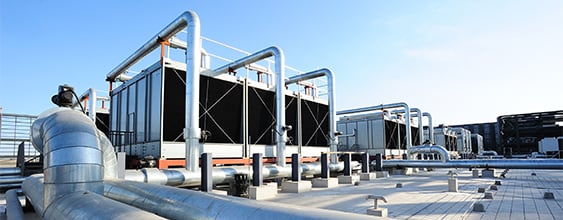*This article originally appeared in the December 2024 issue of Environmental Science and Engineering.
Per- and Polyfluoroalkyl Substances (PFAS) have become a growing issue in the scientific community, as we work to develop solutions to replace, manage and remediate these forever chemicals in a way that reduces their harmful impact on human and environmental health.
There is a growing recognition of the harmful effects of PFAS, and consensus that their removal from products, whenever possible, is the primary action that will put a significant dent in our exposure to them. It is also important to continue to address PFAS already present in the environment, with a prioritization of areas with higher mass and potential for exposure.
In Canada, actions taken by the federal government are starting to yield some positive results, and have provided lessons that the industry and other levels of government can build upon to address this difficult issue.
PFAS impact on human health
The research community has been attempting to better understand the impacts of PFAS exposure on both humans and the environment. Health Canada and Environment and Climate Change Canada, as part of their Updated Draft State of Per- and Polyfluoroalkyl Substances (PFAS) Report released in July 2024, shed some light on what’s been learned so far.
“Some well-studied PFAS have been demonstrated to be readily absorbed into the body and are eliminated very slowly. Consequently, some PFAS can accumulate and persist in the body for years. Exposure to PFAS can affect multiple organs and systems. The main targets include the liver, immune system, kidney, reproduction, development, endocrine disruption (thyroid), nervous system, and metabolism (lipids, glucose homeostasis, body weight). Effects on most of these endpoints have been observed in both animal and human studies.
Since humans are typically exposed to mixtures of PFAS, it is reasonable to expect that cumulative effects may occur. However, the specific hazards associated with these mixtures are largely unknown.”
If further negative impacts on the health of either humans or animals are identified, it would likely speed up the adoption of stringent policies related to the use, containment and remediation of PFAS chemicals.
Progress to date
Until now, the majority of policy and regulatory work done related to PFAS in Canada has been initiated by the federal government. As the entity responsible for regulating the manufacturing, import and use of substances across Canada, it undertook the first actions to regulate PFAS-containing products.
These federal actions began with limiting or prohibiting the use of a few specific PFAS that could be readily replaced in products. This approach represented a first step that limited the shock to the economy and supply chain while further scientific evidence was gathered. Canada stepped up the game recently by signaling its intention to regulate PFAS as a class by issuing a draft risk management scope, requiring companies to report on their PFAS manufacturing, import and use, and consulting on the inclusion of several PFAS in the National Pollutant Release Inventory.
For contaminated sites, the primary focus to date in Canada has mainly been on a single, although significant, PFAS source: firefighting foams. Since many of the key sites impacted by these foams are under federal government control (military bases and airports), targeting them as a source provided a good starting point to determine how best to investigate and address concentrations of these chemicals without significantly affecting multiple market sectors or requiring unprecedented investment.
However, the most challenging chapter starts now.
What’s coming
With the intention of the federal government to regulate PFAS as a class, industry can no longer respond to a regulated limit on one specific PFAS by using another non-regulated PFAS. The challenge is on to look beyond PFAS for substances that will achieve the same desirable or essential properties in consumer products: durability, water, grease and stain repellency, temperature resistance, and more. These products range from rain jackets, for which we may have a higher tolerance for compromise in water resistance, to specialty medical devices or healthcare equipment in which PFAS replacement and alternatives development will have higher stakes. Furthermore, with globally connected supply chains, a ban or restriction on PFAS content in products will require coordination with other countries to maximize benefits and avoid negative effects on business operations and investments in our country.
While federal PFAS limits will apply to the manufacturing, import and use of substances in Canada as well as environmental clean-up targets at sites under federal jurisdiction, it will be up to provinces to establish limits for PFAS for environmental media such as drinking water, wastewater and contaminated sites. So far, some provinces have issued or adopted certain PFAS limits, but most are lagging behind the federal regulations.
Without question, there is an expectation that more provincial regulations are coming, at least for drinking water, wastewater and contaminated sites. The federal government recently updated its PFAS Drinking Water Objective, and the provinces will need to decide if or when to adopt it.
In terms of environmental protection and contaminated sites, there are several potential sources of PFAS contamination beyond firefighting foams. Furthermore, PFAS-containing firefighting foams have been widely used beyond federally regulated sites, including at the municipal level (e.g., fire stations) and in the industrial private sector. PFAS mitigation projects are complex due to the numerous environmental media that may be implicated, including drinking water, surface water, groundwater, soil, sediment, air, wastewater, stormwater, solid waste, and biosolids. Critically, the burden to address PFAS in response to potential new provincial regulations for these media will primarily be on municipalities and corporations, and will require significant operational changes and investments – different than for any other type of contaminants we have seen before. The impact that any provincial regulations would have on municipalities and corporations will directly affect taxpayers and the economy as a whole.
Critical need for prioritization
Considering the magnitude of investments and changes required, it is critical to prioritize PFAS regulatory actions and management approaches that can achieve the most benefit and are supported by a solid cost-benefit analysis. Data from Canada are being compiled with existing information from other jurisdictions on the magnitude of PFAS use and potential environmental releases. These, combined with potential for exposure, can inform prioritization.
Lessons from our neighbour to the south teach us to avoid new environmental standards that may be below the concentrations that we can reliably measure in a laboratory or below PFAS concentrations in rainwater. Such standards would result in a magnitude of sites requiring action that would be financially overwhelming and unattainable to the point of paralyzing us.
In addition, the more uniform the approach we implement to regulate and address PFAS across Canada, the better it will be for our connected economy. In this regard, we could take some lessons from Australia, where the federal government and states have joined forces to develop a standardized management plan to deal with PFAS contaminated sites and waste across the country.
Along with prioritization of regulatory and management actions, supporting the development and implementation of PFAS destructive remedial technologies that fully break the PFAS cycle could help Canada become a leading player in the sustainable fight against PFAS. There are promising signs that point in this direction.
A future ready workforce
Being able to address PFAS challenges is going to demand expertise from within the current environmental engineering and science industry, but also from future leaders of the sector. Ensuring that the next generation is armed with the skills to address PFAS and has the right mindset will be crucial.
We need the next generation to bring forward an innovative mindset, with a desire to put a stop to the PFAS cycle (demand for certain products/practices). That’s going to mean creating capabilities related to product chemistry (innovation and safe product substitution), supply chain management, and optimization of destructive treatment technologies as opposed to concentration/separation technologies that may move the problem elsewhere.
The writing is on the wall: future policies at all levels of government will cause us to invest in the substitution and destruction of PFAS. With this in mind, we need to support companies to safely re-engineer their products, work with governments and industry to prioritize actions to sustainably address PFAS contamination, and prepare our next generation for the immense amount of challenging and innovative work that lies ahead.

















